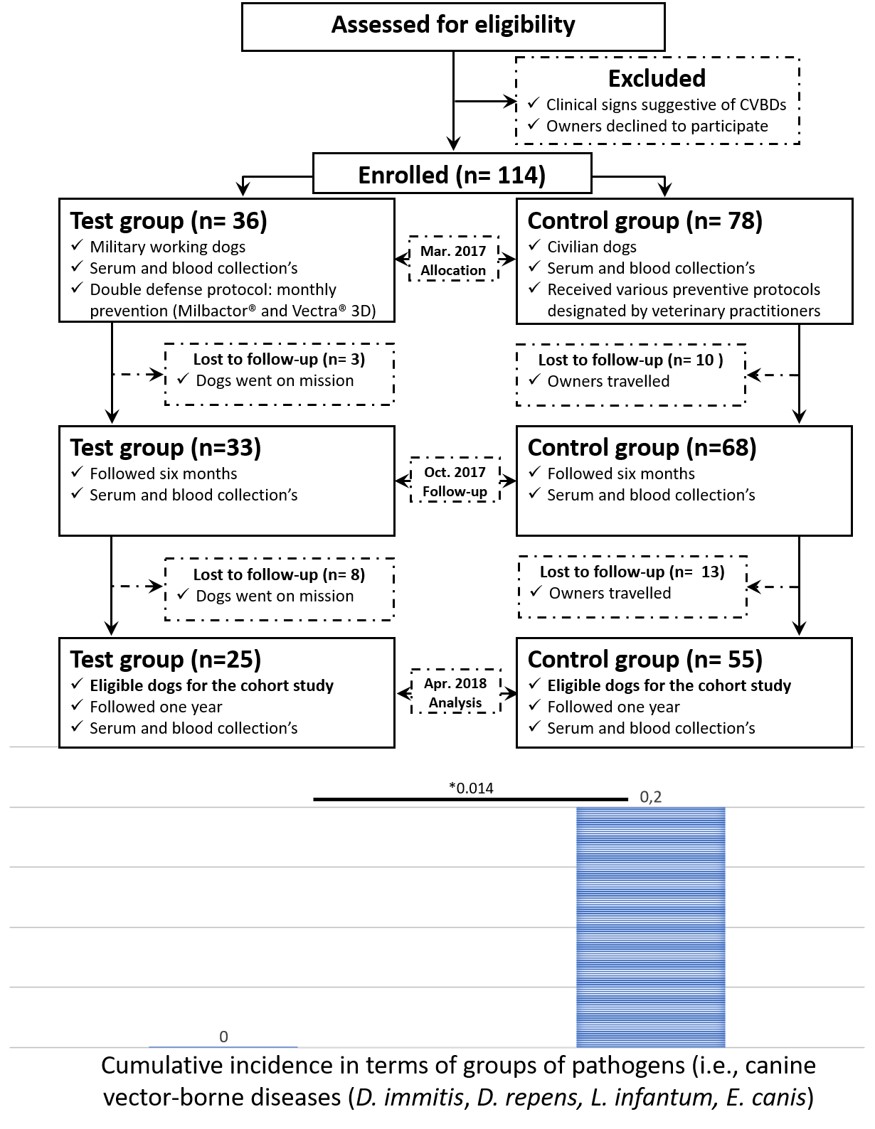With a mild Mediterranean-type climate, Corsica is endemic for canine vector-borne diseases (CVBDs) such as dirofilariosis (a mosquitoes borne-diseases: MBDs), leishmaniosis and ehrlichiosis. The aim of this present study was to evaluate a monthly multi-modal prophylactic strategy (MMP) against CVBDs occurring in Corsica. The study was conducted as a comparative field trial in which eighty dogs allocated into two groups were included: (i) Group 1 consisted of 25 dogs under the MMP [per-os administration of 1.5 tablet of milbemycine oxime-praziquantel and a topical line-on application of a 3.6 mL solution of dinotefuran-permethrin-pyriproxyfen] and (ii) Group 2 under various real-life prophylactic treatment (RLP) based on the use of ectoparasiticide products [different formulations: deltamethrin, fluralaner, fipronil] and/or macrocyclic lactones based-products [milbemycin oxime/praziquantel, milbemycin oxime, moxidectin] during the period ranging from June to October 2017. All animals were followed for one year and had blood drawn at day 0, followed by follow-up at 6 and 12 months. Samples were screened for filariosis using molecular tools as well as for leishmaniosis and ehrlichiosis using indirect immunofluorescence assay (IFA). At the end of the study, no new cases of CVBDs were recorded within Group 1. In Group 2, the cumulative incidence of CVBDs was 20.0% (n= 11; p= 0.015) including dirofilarioses due to Dirofilaria immitis and/or D. repens, with 16.4% (n= 9; p=0.027). Ehrlichiosis was 5.5% (n= 3; p=0.241). No new cases of leishmaniosis were detected in Group 2. The data illustrated that, unlike the RLP treatment which failed to protect at least 20% of dogs, the MMP based on the concurrent administration of milbemycine oxime-praziquantel and dinotefuran-permethrin-pyriproxyfen is efficient to protect dogs against CVBDs in a high-risk area.

